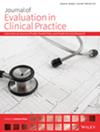The Role of Double-Zero-Event Studies in Evidence Synthesis: Evaluating Robustness Using the Fragility Index
Abstract
Rationale
Zero-event counts are common in clinical studies, particularly when assessing rare adverse events. These occurrences can result from low event rates, short follow-up periods, and small sample sizes. When both intervention and control groups report zero events in a clinical trial, the study is referred to as a double-zero-event study, which presents methodological challenges for evidence synthesis. There has been ongoing debate about whether these studies should be excluded from evidence synthesis, as traditional two-stage meta-analysis methods may not estimate an effect size for them. Recent research suggests that these studies may still contain valuable clinical and statistical information.
Aims and Objectives
This study examines the role of double-zero-event studies from the perspective of the fragility index (FI), a popular metric for assessing the robustness of clinical results. We aim to determine how including or excluding double-zero-event studies affects FI derivations in meta-analyses.
Methods
We conducted an illustrative case study to demonstrate how double-zero-event studies can impact FI derivations. Additionally, we performed a large-scale analysis of 12,184 Cochrane meta-analyses involving zero-event studies to assess the prevalence and effect of double-zero-event studies on FI calculations.
Results
Our analysis revealed that FI derivations in 6608 (54.2%) of these meta-analyses involved double-zero-event studies. Excluding double-zero-event studies could lead to artificially inflated FI values, potentially misrepresenting the results as more robust than they are.
Conclusions
We advocate for retaining double-zero-event studies in meta-analyses and emphasise the importance of carefully considering their role in FI assessments. Including these studies ensures a more accurate evaluation of the robustness of clinical results in evidence synthesis.

 求助内容:
求助内容: 应助结果提醒方式:
应助结果提醒方式:


